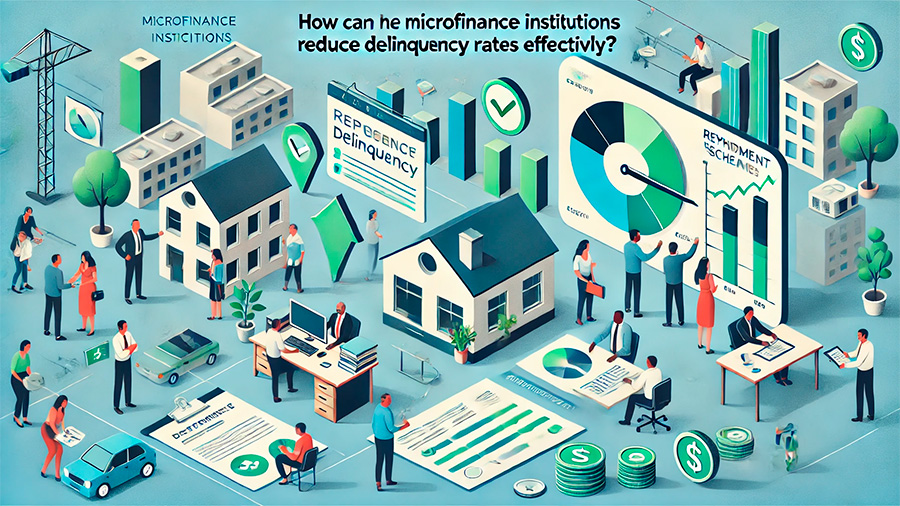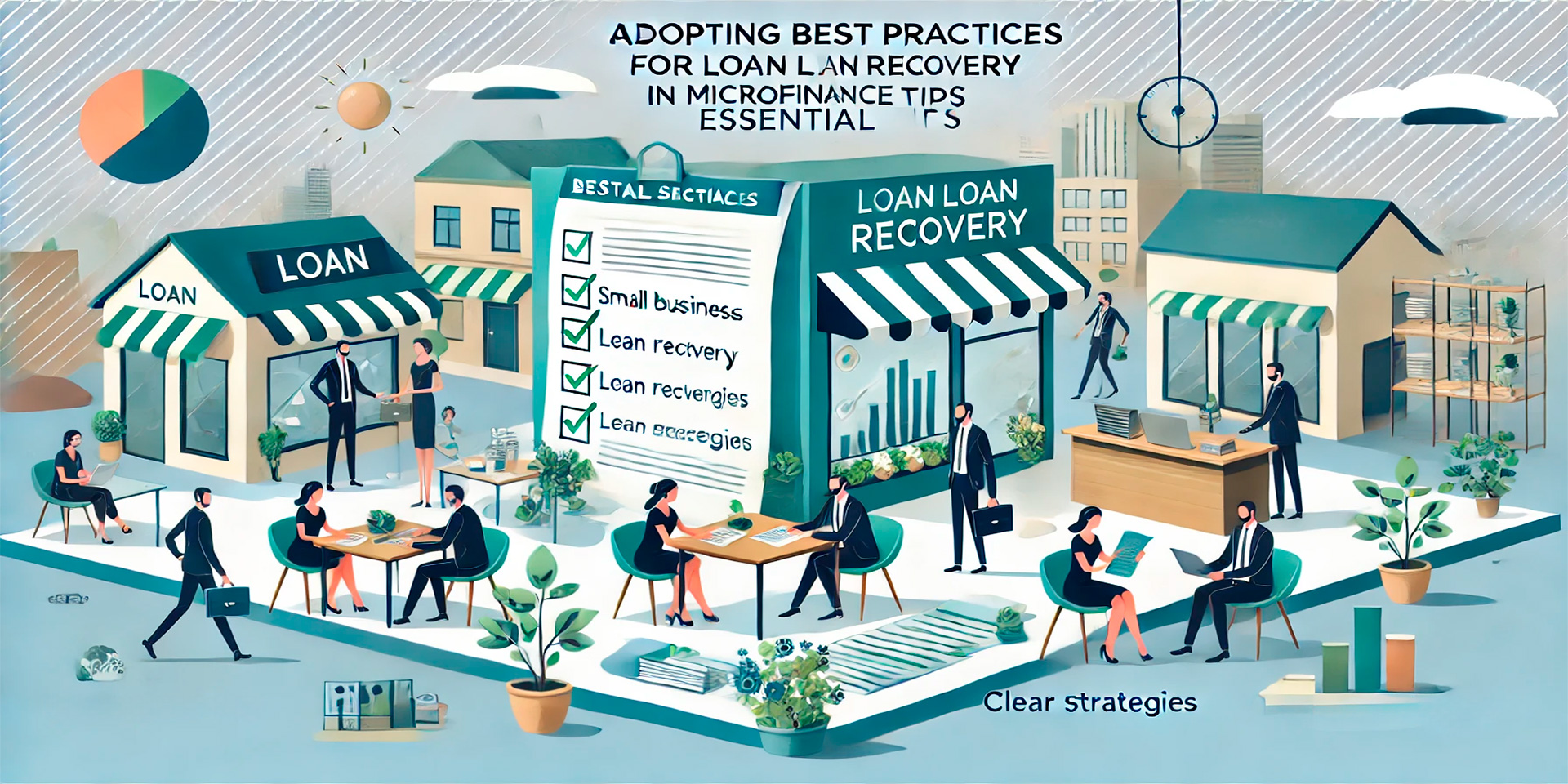To adopt the best practices for loan recovery in microfinance, start by implementing a holistic recovery policy. This means segmenting and prioritizing your loan portfolio based on various factors like payment history and client demographics. By doing so, you can focus resources on high-risk and high-potential loans, ensuring more efficient recovery efforts. Automation also plays a crucial role; it speeds up tasks, reduces human error, and frees up time for your team to focus on more critical activities.
Reducing delinquency rates effectively hinges on proactive strategies such as providing financial literacy education and improving the payment experience. By educating borrowers on budgeting and debt management, you empower them to make informed decisions and repay loans on time. Additionally, crop-based loans, with their flexible repayment schedules tied to harvest seasons, can significantly ease the repayment burden for agricultural clients, aligning loan terms with their cash flow realities.
Maintaining strong client relationships during the loan collection process is key. Show empathy and respect for clients’ financial struggles to foster trust and cooperation, which can lead to more productive conversations and timely repayments. This approach not only improves debt recovery rates but also establishes long-term customer satisfaction. Remember, our company is here to support you every step of the way, ensuring that both you and your clients can navigate the complexities of loan repayment with greater ease.
What Are The Key Best Practices For Loan Recovery In Microfinance?
To achieve effective loan recovery in microfinance, you should adopt several key best practices.
First, develop a comprehensive recovery policy. Your policy should be detailed and include clear objectives, roles, responsibilities, strategies, tools, and performance indicators. Ensure it’s aligned with regulatory requirements and industry standards, and review it regularly.
Next, segment and prioritize your loans. Use a data-driven approach to categorize your loan portfolio based on risk and recovery potential. Focus your efforts on high-risk and high-recovery potential loans.
Proactive delinquency management is crucial. You need to implement proactive strategies to prevent delinquency. Educate borrowers and establish mutually agreeable payment dates.
Enhancing internal productivity is another key step. Improve collections efficiency by selecting and training your staff, setting up proper procedures, and creating incentives for performance.
Quality information management is essential. Maintain efficient reporting systems and verify client information to ensure accurate data for decision-making.
Reschedule loans when necessary. Follow guidelines for rescheduling defaulted loans to recover the full amount, including both principal and interest, when it makes financial sense and considers the borrower’s situation.
Begin early and persistent follow-ups. As soon as loan performance becomes unsatisfactory, start persuasion efforts. Use a systematic follow-up schedule to ensure consistent communication and timely payment reminders.
Finally, consider legal options as a last resort. When necessary, pursue legal means to recover overdue loans, but be mindful of the cumbersome and time-consuming nature of the legal process.
Finally, to enhance your loan recovery efforts and maintain financial stability, make sure to develop a sound recovery policy, segment and prioritize your loans, manage delinquency proactively, improve internal productivity, maintain quality information, reschedule loans thoughtfully, follow up consistently, and use legal options as a last resort.
How Can Microfinance Institutions Reduce Delinquency Rates Effectively?
To effectively reduce delinquency rates in microfinance institutions, you should focus on several key strategies:
First, improve the payment experience for your borrowers. You need to ensure clear communication about repayment dates and amounts, offering multiple payment options like Direct Debit and Standing Orders. Embrace technology to send reminders and make it easier for borrowers to make payments.
Next, provide financial education and support. Offering financial literacy programs can help your borrowers manage their finances better. Also, provide counseling and support for those facing financial difficulties.
Tailor your loan products to meet the specific needs of your borrowers and implement flexible repayment schedules that align with their income flow. This can help prevent repayment issues from arising.
Proactive monitoring and follow-up are crucial. Regularly monitor loan accounts to identify potential repayment issues early. Maintain consistent follow-up with borrowers who show signs of financial stress.
You should also offer incentives for timely payments. Give borrowers interest rate reductions for timely repayments and rewards or recognition for those with good repayment histories.
Lastly, use community-based approaches. Foster a sense of accountability through group lending models and use peer pressure and support mechanisms within communities to encourage timely repayments.
In closing, by improving the payment experience, providing financial support, tailoring loan products, proactively monitoring accounts, offering timely payment incentives, and using community-based approaches, you can reduce delinquency rates effectively in your microfinance institution.

What Role Does Financial Literacy Play In Improving Loan Repayment Performance?
Financial literacy plays a crucial role in improving your loan repayment performance. When you understand financial concepts like budgeting and debt management, you are more likely to repay loans on time. Studies show a strong positive correlation between financial literacy and loan repayment, meaning if you are financially literate, you tend to manage your loans better.
You can benefit from understanding various repayment options. This knowledge allows you to choose the best plan for your situation and avoid default. Financial literacy helps you foster responsible borrowing and a culture of financial accountability. This means you are encouraged to budget, save, and prioritize debt repayment.
Overall, being financially literate empowers you to make informed financial decisions, ensuring you meet your loan obligations without undue stress.
How Do Crop-Based Loans Differ From Standard Loans And Affect Repayment Strategies?
Crop-based loans are tailored specifically for agriculture and differ from standard loans in key ways. They align with the agricultural cycle, with terms designed around planting and harvest seasons. This ensures that you receive funds when you need to buy seeds and fertilizers.
Repayment schedules for crop-based loans are also more flexible than standard loans. Instead of fixed monthly payments, you repay after the harvest, when you start earning from your crops. This setup helps you manage cash flow and reduces the stress of repayment during lean periods.
Collateral for these loans often depends on future crop sales rather than hard assets like land. If you have a proven record of crop production, this collateral approach can be more attainable. Lenders may also consider crop insurance and grain marketing plans as part of the collateral, adding security against risks like bad weather or market fluctuations.
As a final point, crop-based loans provide a flexible, tailored approach that aligns with your agricultural income cycles, making repayment more manageable and sustainable while helping you manage risks and resources more effectively.
What Are The Benefits Of Using Automated Debt Recovery Management Systems In Mfis?
Using automated debt recovery management systems in Microfinance Institutions (MFIs) offers numerous benefits:
First, you get enhanced efficiency. Automation speeds up tasks like sending payment reminders, generating reports, and tracking contact information, allowing your team to focus on more critical activities.
Next, accuracy improves. The system reduces human errors in data entry and documentation, ensuring accurate and current debtor information, which minimizes costly mistakes.
You also benefit from real-time data access. You can track debtor accounts and access unpaid loan data immediately, making it easier to update loan repayment statuses and manage borrower financial positions.
Automated communication is another plus. The software enables automated communication through SMS, email, and calls, ensuring consistent and timely interactions with borrowers.
Further, compliance and risk management become easier. Automated systems include compliance features and risk assessment tools that help you adhere to regulations, track compliance, and manage the risk of overdue loans.
Centralized data management streamlines your operations. MFIs get a centralized repository for client data, loan records, and financial transactions, facilitating real-time reporting and strategic decision-making.
Predictive analytics offer proactive insights. Advanced software like receeve uses predictive analytics to forecast customer behavior, allowing you to address potential issues proactively and tailor debt resolution strategies.
Customizable solutions ensure flexibility. Automated systems can be tailored to meet your unique debt collection needs, offering flexible payment options and personalized customer interactions.
Finally, data security is prioritized. Such systems implement robust measures to protect sensitive financial information and maintain confidentiality.
To sum up, automated debt recovery management systems boost efficiency, accuracy, data access, communication, compliance, centralized data management, predictive analytics, customization, and data security, empowering you to handle debt collection more effectively.
